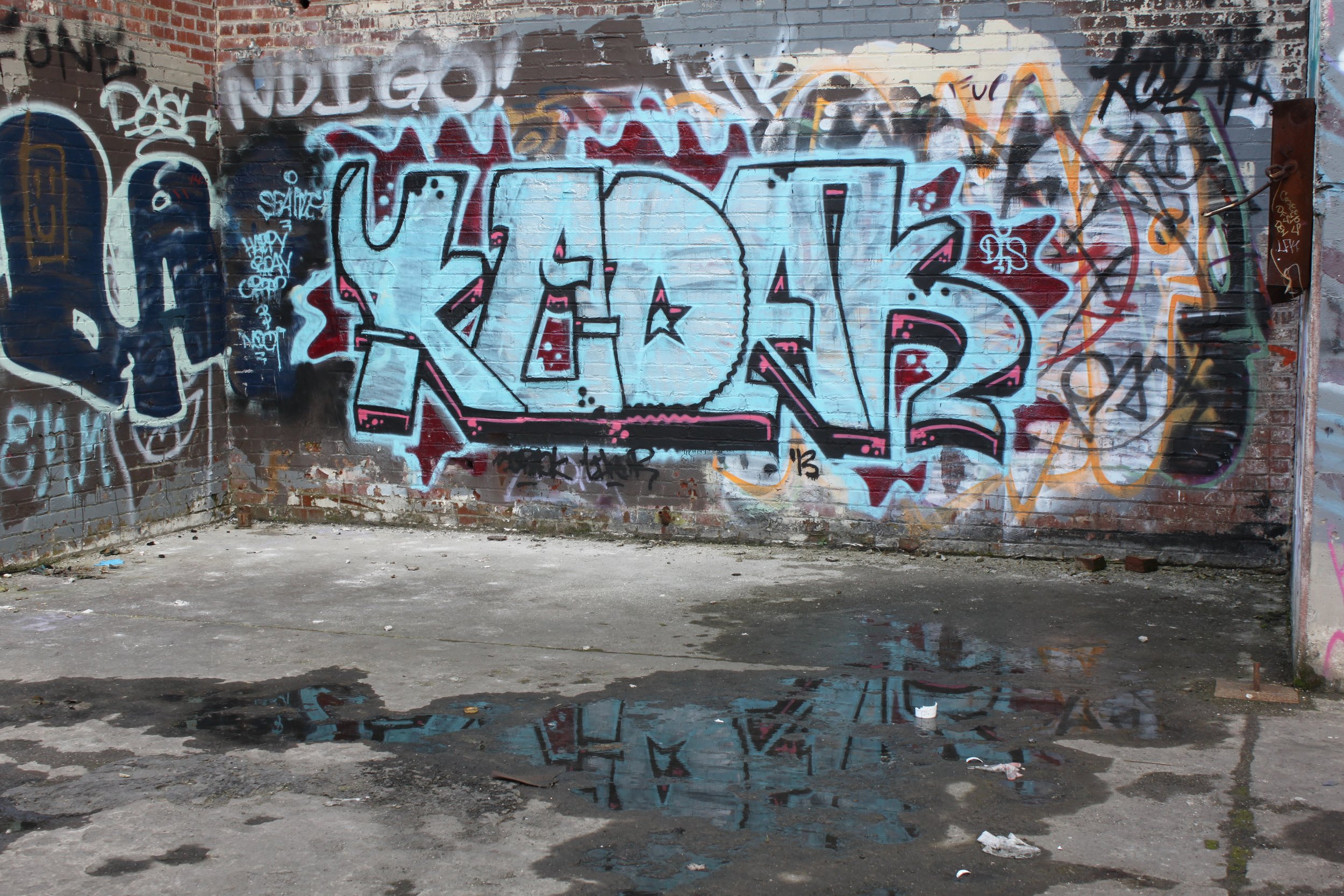TAYLOR ELECTRIC’S HISTORY
Photo by Crystal Amaya
For over a decade, the burnt-out ruins at SE 2nd and Clay served as Portland's most famous space for graffiti – a free open art gallery that attracted artists and onlookers from near and far.
Built in 1936 by the Loggers & Lumberman’s Investment Company, the warehouse at 240 SE Clay (previously 352 E Clay St) served as a home to many different businesses through its lifetime at its picturesque location at the east-end of the Central Eastside Industrial District. In the 1990s, the Rexel Taylor Electrical Supply Company purchased the building and used it as a storefront and warehouse for electrical supplies.
Photo by Anton Legoo
On the night of May 17, 2006, a stack of pallets outside the building caught fire. Fueled by the electrical supplies inside, a massive 4-alarm fire broke out. Over 125 fire-fighters from Portland and nearby cities worked around the clock trying to extinguish the blaze and protect nearby buildings. Burning for over 24 hours, the fire sent a river of debris into the nearby Willamette River.
Taylor Electrical Supply had plans to rebuild and sell the property, but that fell through, so the charred skeleton of the warehouse sat abandoned for over a decade. The ruins blossomed into a unique and iconic local landmark - a sanctuary for artists, rebels, and outcasts. When people visited Portland and wanted to see graffiti, Taylor Electric was an obvious and easily accessible destination. Cultural activities from dances, circuses, and bicycle chariot wars used Taylor Electric as a gritty stage and backdrop.
Photo by Anton Legoo
In many booming west coast cities, space for unanticipated interactions and unauthorized art are rapidly diminishing. However, these derelict spaces serve important functions for many creatives. Artists are often some of the first to find, occupy, and re-use dilapidated spaces. These cracks of the urban fabric fall outside the watchful eye of neighbors and police.
Photo by Tiffany Conklin
There is an inherent uncertainty and unpredictability of abandoned spaces where graffiti often gravitates. These spaces often provide the raw material conditions that incubated new ways of expression and imaginative thinking. Graffiti’s ephemeral and nomadic nature contributes to its resiliency and allure. For these reasons, the aesthetics of Taylor Electric were addictive for many, including artists, tourists, academics, journalists, photographers, and videographers.
Geographer Bradley Garrett wrote: “These spaces are appreciated for their aesthetic qualities, for their possibilities for temporarily escaping the rush of the surrounding urban environment and their ability to hint at what the future might look like, when all people have disappeared, a visceral reminder of our own mortality.”
Photo by Anton Legoo
THE RUINS OF Taylor Electric
Photos by Tiffany Conklin, Anton Legoo, Oddio, and Crystal Amaya
TAYLOR ELECTRIC INSPIRED ART
Art by Brin Levinson
Art by Jessica Hess



























































